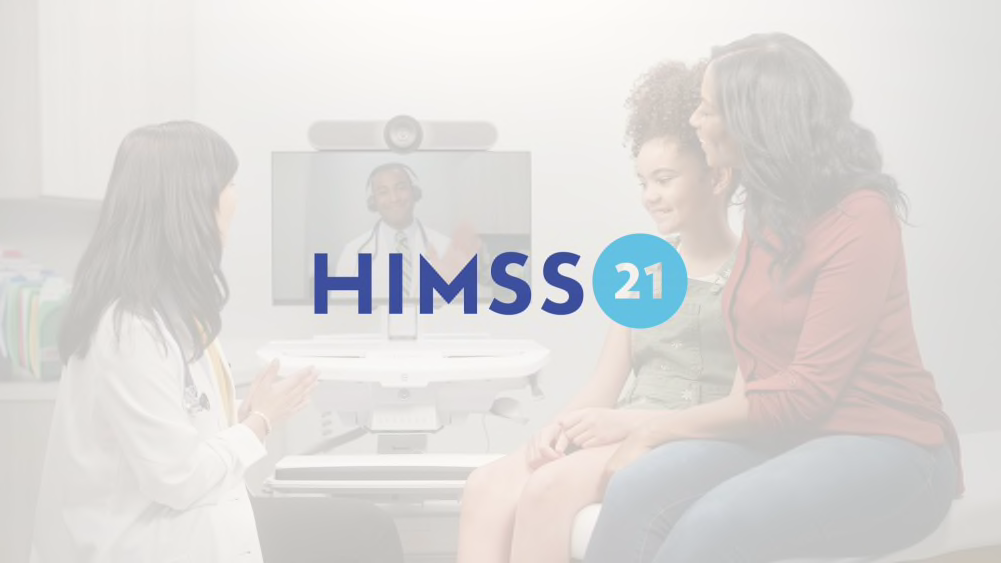Five Key Takeaways from HIMSS21

While many topics were covered at HIMSS21, one theme was clear above all: the convergence of the pandemic and existing widespread chronic illness has made it more important than ever to unify patient engagement with population health management and public health initiatives.
With people living longer with chronic illness, and people becoming chronically ill at younger ages, the global healthcare system has never been under more strain. Additionally, more patients are suffering from more than one chronic illness.
The sentiment put forth at the conference was that everyone is now in the business of care delivery in order to address these challenges. Providers are asking patients to take a more proactive role in their care management. In return, patients are demanding from providers user-friendly, on-demand ways to do so.
The goal is to fundamentally reshape care delivery and make healthcare more sustainable and equitable around the world.
From the overarching need for digital transformation to the adoption of specific tools like virtual care, here are Logitech’s five key takeaways from HIMSS21 that show where healthcare is headed to solve these problems:
1. Digital Transformation
Health systems are realizing that they must go digital-first in order to put patients first in today’s fast-paced and complex world. A better patient experience results in increased levels of patient engagement. Establishing higher degrees of patient engagement is critical to facing down the myriad of challenges the healthcare system currently faces.
To go digital-first, health systems are increasingly consolidating and simplifying their tech infrastructures so that people, devices and data can move fluidly throughout the organization.
2. Opening the Digital Front Door
It is more important than ever for healthcare to become as consumer-friendly as possible. As the consumerization of healthcare continues, patients’ expectations will evolve. Today, patients want to be able to access their provider without interrupting their daily routine, from the devices they already use. At the same time, providers seek better, more frequent communication with patients and their care teams to increase engagement.
Keeping the digital front door open through smartphones, tablets and PCs has become essential to offer a high-quality patient experience. Furthermore, it is key to offer applications that feature slick, simplified user interfaces that people have become accustomed to in other aspects of life, from social media to entertainment, ecommerce, and beyond.
3. Virtual Care is Here to Stay
Virtual care has gone mainstream due to the pandemic. Hal Wolf, president and CEO of HIMSS, shared with attendees that only 0.05% of healthcare encounters were virtual pre-pandemic. Those numbers peaked at 14% at the height of the pandemic, and are now leveling out at around 7-8% of all care encounters.
Increasingly, virtual care is being seen as the most promising tool to fill gaps in care delivery and solve for the need to deliver continuous care that supplements intermittent, episodic care. Additionally, with virtual care being used for teletherapy, telepsychiatry, pre-visit/post-visit monitoring, and on-site specialist consults, these tools show significant promise in their ability to help providers better care for the “whole patient” and create better overall care outcomes.
Virtual care is continuing to prove its value in delivering care to underserved communities. At HIMSS21, representatives from Blessing Health System in the U.S. and Teladoc Health shared a presentation of a school-based telehealth program they implemented, where video-based telehealth was used to provide care types such as primary care and behavioral health visits to children within their schools. Not unlike other areas of the world, challenges exist in this rural region with regard to population, distance, time, and access to care. The outcomes of the program were significant, with an opt-in rate of 80% of students, 1 - 2 student absences prevented per week, and an average telehealth response time of less than 30 minutes.
4. What Makes a Good Telehealth Experience?
While virtual care adoption and satisfaction are generally on the rise, certain technical barriers remain that continue to hinder true mass adoption. A study from Escalent, on behalf of Logitech, found that video quality in particular remains a pain point that is preventing providers from establishing a sense of immersion and recreating the in-person experience.
High-quality audio and video and advanced panning and zooming features are essential for accurately diagnosing patients from a distance. Additionally, it is essential that telehealth hardware is simple to set up, use, and maintain, for both patients and providers and their IT teams for minimal interruptions and maximum effectiveness. This requires a high degree of interoperability and integration so that telehealth devices work seamlessly across different EHRs and other applications and medical devices.
When deep simplicity and ease of use are combined with cutting-edge technical horsepower, the virtual care experience is elevated and on-par with being in-person.
5. Innovation Across the Board
The pandemic has complicated an already challenging situation, and providers are looking at all kinds of bold and creative ideas to make healthcare more sustainable. They are increasingly aiming to take a systems-thinking approach to take care of the whole of the patient through the entirety of their journey. From the patient’s bedside to a provider’s desk, and anywhere in between, care providers are rethinking what is possible for seamless and continuous engagement in an effort to put patients at the center and wrap care around the patient as often as possible.
YOU MAY ALSO BE INTERESTED IN

As Video Meetings Increase, So Does Meeting Fatigue

Digitec galaxus

How Organizations Can Achieve Sustainability Goals

Declutter Remote Workspaces to Boost Productivity
Browse Categories: